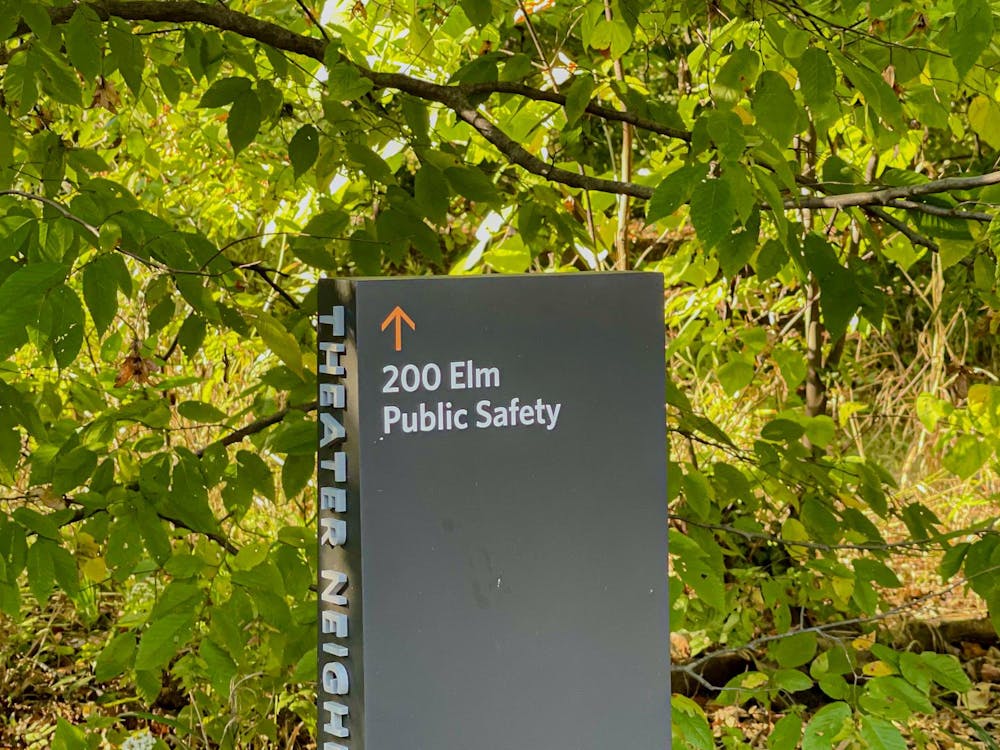Three University researchers have been awarded grants from the National Science Foundation (NSF) to study how to track, model, and understand information about pandemics like COVID-19. The grants are part of the NSF Rapid Response Research (RAPID) program, which funds work that responds to imminent and unanticipated events — like global outbreaks.
One project is headed by associate professor of psychology and public affairs Alin Coman whose team is studying the spread of information about the COVID-19 pandemic within social networks and how anxiety about the disease affects sharing of accurate facts.
The current study will build upon previous work by Coman on how information is exchanged between people, especially crucial health information.
“The study is aimed at exploring medical information acquisition and propagation in fully mapped social networks under conditions of high perceived risk of viral infection,” Coman wrote in an email to The Daily Princetonian.
It will consider two main questions — how anxiety about getting sick influences how much one knows about the disease, and how policy makers can maximize the spread of accurate information while minimizing the spread of misinformation.
Broadly speaking, the experiment will involve networks of individuals talking about COVID-19. Recruited participants will take part in online chats in groups of two, discussing what they know about COVID-19 and how they feel about the pandemic. Before and after the interactions, they will take a survey with questions assessing both their knowledge of the virus and the emotions they are experiencing, including anxiety, Coman explained.
The sequence of conversations between people creates what Coman calls a “conversational network structure,” which can be altered for two conditions: one with high information transmission, and one with low information transmission. In both, researchers will assess the two outcomes: knowledge about the disease and level of anxiety.
A previous study by Coman, published in 2015, looked at how mass media coverage influences what health facts a person remembers or forgets. It was done in a response to news coverage of the Ebola outbreak in 2014, where risks to those in the United States were often exaggerated by media outlets.

In this study, a group of 460 adults learned about meningococcal disease, a common bacterial infection that can spread to the brain and spinal cord. Researchers found that health risks, symptoms, and other key facts that were emphasized by the media were more likely to be remembered — often at the expense of other, similar pieces of information that received less attention. This “forgetting effect” was worse for highly anxious participants.
The present study differs in that it looks at “how people acquire information rather than on how they forget information,” Coman wrote. In particular, the team is interested in how anxiety impacts what kinds of information participants bring up in conversations and how much they integrate new information they learn.
The RAPID proposal on COVID-19 also connects with previous work Coman has done on collective memory, a shared set of facts remembered about an event or experience. Those studies found that altering the structure of a conversational social network had an impact on how similar people’s memories became.
Coman predicts that fear of infection should impact the spread or propagation of information. Such results will be relevant for policies that aim to combat misinformation often found in mass media or social networking platforms like Twitter and Facebook.

The research “would provide a scaffold for investigating strategies to enhance the spread of accurate information and diminish the dissemination of misinformation during times of crisis,” Coman wrote. For example, it might uncover “whether instructions to resist misinformation lead to decreasing the propagation of misinformation in the network.”
Another effort is led by Kyle Jamieson, associate professor of computer science, who is developing a system that uses mobile phones to assist in “contact tracing” — detecting who might have been near a person infected with a disease like COVID-19.
The project, which also received University funding, could help health officials prevent the spread of future pandemics. It could also help prevent a resurgence of cases when the country begins to reopen businesses, schools, and other public spaces.
“This is intended to be used in situations where tracing contacts would allow people to prevent pandemics from happening in the first place, before it goes out of control and goes to community spread,” Jamieson said.
Community spread refers to the spread of a disease within a particular geographic location, where no individuals are known to have recently travelled and brought in the virus from another area. By pinpointing exactly who is infected when cases are few, health officials can prevent the crisis from growing.
Jamieson’s system works differently than other similar initiatives from universities and businesses across the country, including Apple and Google. Instead of using GPS tracking, which does not work well indoors, or Bluetooth, which can be imprecise, Jamieson uses radio connections that our phones make with cellular towers.
These towers “ping” our phones with signals, which can then be processed to figure out how close two individuals might be to each other and also the amount of time they spent near each other. This will make sure that identified contacts are accurate, and actually reflect what is happening on the ground.
“We hope that this more granular data will aid the process of contact tracing in a more specific manner,” Jamieson said.
The information coming from the cell towers will be logged onto an app that the user downloads. The user can uninstall the app, turn off the data logging, or clear the stored data at any time.
“The privacy-respecting part is that this information is completely under the control of the user,” Jamieson said.
Jamieson walked through how the system might be used in contact tracing. After a user of the app tests positive for COVID-19, health officials will then ask the user to consent to provide the information logged on his or her phone. If the user consents, officials can use the data to identify other users who were in close proximity. They can then send alerts to those users notifying them that they should self-quarantine or be tested.
Before the app can be useful, however, community spread has to slow and testing has to become more widely available, Jamieson said. Practically speaking, an application like Jamieson’s would likely be used in a smaller setting, like a workplace or university, to track a limited number of people who all consent to downloading the app. It could also be integrated with programs developed by other parties.
“These different approaches that different researchers and companies are proposing could be complementary to each other,” Jamieson said.
The third NSF grant was awarded to H. Vincent Poor, professor of electrical engineering, in collaboration with researchers at Carnegie Mellon University. Poor recently published a model for epidemic tracking that integrates the impact of mutations to more accurately characterize disease spread.
“The new model accounts for mutations in a pathogen as it spreads. This is an improvement, as mutations can change the ease with which a virus can be transmitted from one person to another,“ Poor wrote to the ‘Prince’ in an email for a past article.
Poor is now improving upon the model to add in the effects of public health measures, which will help leaders decide how and when to implement actions such as travel bans.
“As we have seen with COVID-19, the spread has been much more rapid than leaders expected,” Poor wrote. “To the extent that this can be attributed to mutations, this model could help give decision-makers a clearer picture of what to expect and thus take quicker action if needed.”








